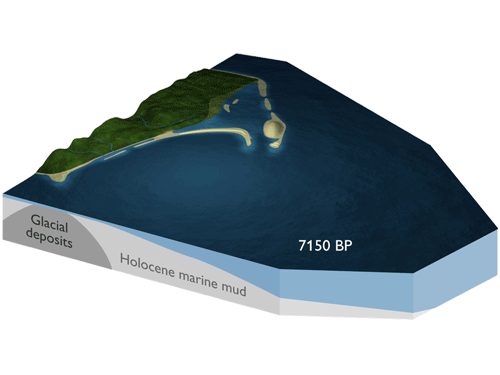The Skaw
The Skaw is a recurving marine spit. It migrates and grows continually towards the northeast and it had an entirely different appearance in the Viking Age. At the same time as the sea route through the Limfjord became closed around AD 1100, human activity began in Skagen, which eventually went on to become a wealthy town based on fishing and salvage.
The Skaw Spit is a 30 km long, sandy spit with an area of about 300 km². It extends out to the northeast from the solid moraine landscape of Vendsyssel between Frederikshavn and Hirtshals. It is the world's largest spit, and was created by the sea transporting sand up the west coast of Jutland – corresponding to about 80,000 lorry loads (with trailers) a year!
Grenen, which is the outermost tip of the spit, was and is a very dangerous place for shipping. The Skaw Spit extends far off the coast below the surface of sea and migrates according to winds and currents, causing the waters to change character constantly. This is the reason why throughout history, and especially during the age of sail, ships preferred to navigate through the Limfjord rather than embark on the dangerous voyage umme land – "around the land". This is possible today via the partly artificial Thyborøn Canal which passes through Agger Tange, but from around 350 BC–1100 AD this thoroughfare was kept open by nature. When it closed again, the western part of the Limfjord became a backwater, whereas Skagen became a wealthy town on the basis of fishing and fish exports (not to mention salvage).
The City of Skagen
Skagen (The Skaw) did not have any trading links with the surrounding hinterland as was the case with the other market towns, but was a fishing settlement that can trace its roots back to the 13th century. At that time the area was completely desolate because the spit and the area around it was not suited for agriculture. Already in the 12th century, however, horses grazed in Højen (the old part of Skagen) and the shepherd fished a little.
Fact: In 1561, following pressure from the great seafaring nations, the town became one of the first places in Denmark to profit from the expansion of the lighthouse authority. Today, a reconstruction can be seen of the bascule light from 1627 as well as Denmark’s oldest brick-built lighthouse from 1747.
Mikkel H. Thomsen
